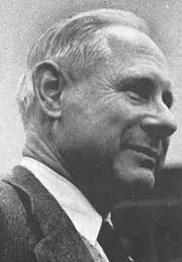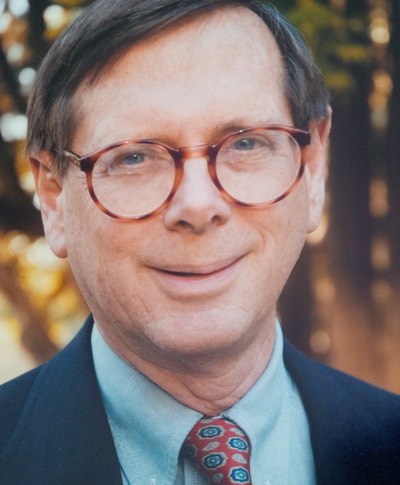History
The Founding of the ASP
|
|
BASP I, Issue 1
Laying the Groundwork: Alan Samuel and the Society's Formative Years
 Alan Samuel Alan Samuel
Alan Samuel was the Society’s first Secretary-Treasurer, holding the position from 1961 to 1973. Samuel—a papyrologist, historian, aspiring politician, entrepreneur, and avid gardener—had a knack for crafting new identities for himself. While Secretary-Treasurer of the ASP, Samuel forged an identity for the young learned society. Indeed, Samuel has been rightly identified as the “main engine” of the Society’s development, and his contributions still largely define the character of the ASP today. The Society’s early growth, therefore, is best understood through the lens of Alan Samuel and the precedents he introduced during his tenure as Secretary-Treasurer.
BASP: The Journal that Shouldn't Have Been Perhaps the most significant accomplishment of Samuel’s tenure as Secretary-Treasurer was his creation of The Bulletin of the American Society of Papyrologists (BASP). Today, BASP is the premier—the only, in fact—North American journal dedicated to papyrology and its related disciplines (see more information at BASP). While BASP has been a bona fide academic journal for most of its existence, Samuel had a very different vision for the publication when he sent out the first issue in 1963: This Bulletin is not intended to be a journal, and with good fortune it will never become one. I plan it to be a means of rapid dissemination of information, and now that it is started, I shall send out the material as it is received Indeed, Samuel’s BASP achieved this unconventional goal. Flipping through the early issues of the Bulletin, the reader finds members' notes for potential articles, announcements of young members’ dissertations in progress, full transcripts of meetings, as well as Samuel’s quarterly updates in the Society’s Activities section—which includes mundanities such as his decision process regarding which typesetting font to use, his struggle figuring out how to use his new VariTyper, and candid reports on the Society’s finances. Though it lacked in formality, Samuel’s BASP was an authentic endeavor to cultivate a sense of community among the ASP’s members—a North American brand of the amicitia papyrologorum.
It was not long, however, until members of the ASP tapped BASP’s potential to become a bona fide academic journal. In 1973, Samuel’s Doktorkind Roger Bagnall assumed the Secretary-Treasurership. Immediately, Bagnall and fellow directors separated editorship of the journal from other Secretary-Treasurer duties and appointed G. Michael Browne as the inaugural editor of the new Bulletin, with J.A.S. Evans as the editor of book reviews. With a team of directors exclusively devoted to its editing, BASP was able to grow into the journal it is today, and the Society had space to tend to other publications, including the Monograph series. In 1979, an editorial board for the Monographs was established, and its inaugural members--G. Michael Browne, Ann Hanson, and Ludwig Koenen--contributed their services to the series for decades. (Samuel seems to have been responsible for the early volumes of the monograph series, but there was no formal post.)
In 1984, BASP, too, gained a full editorial team. For the publishing of BASP and its book series the Society had by the 1980s partnered with academic publishing agency Scholars Press, a novel consortium of learned societies for which the ASP was an early sponsor. After the dissolution of Scholars Press in 1999, the publishing enterprises of ASP were managed for the next 15 years mostly in-house, using a succession of distributors for the book series. Now, BASP is published by Peeters Publishers, and older issues of the journal are available on-line through Peeters and JSTOR; the Monograph and other book series are published and distributed by the University of Michigan Press.
The Summer Institutes The second seminal project Samuel spearheaded was the ASP Summer Institutes in Papyrology. An idea of Welles’, the Summer Institutes furthered the ASP’s goal of expanding papyrology’s horizons beyond the few Classics departments that had dominated the field. As mentioned earlier, only a handful of American institutions offered papyrological training in the 1960s. Offering an intensive course on the methodology and value of papyrological research, the Summer Institutes were designed to address this problem. Today, the newly revived Summer Institutes continue to honor their original goal of widening access to papyrological training. Samuel was the force behind the first five Summer Institutes, which ran from 1966 to 1970. Using his remarkable persuasive skills, Samuel made the Institutes possible by securing one of the first grants ever awarded by the National Endowment for the Humanities. With this funding, Samuel recruited a corps of papyrology heavyweights to teach the course. Included were international scholars such as Eric G. Turner of UCL (later Sir Eric Turner) and his student Peter Parsons, who was to become the Regius Professor of Greek at Oxford, but the bulk of lecturers and assistants were enlisted from the ASP membership—which included the ASP’s second president Naphtali Lewis and its founder C.B. Welles. The cohort of students trained by these papyrologists came from a wide array of institutions, mostly from schools without developed papyrology programs. The list of participants in the inaugural 1966 institute is displayed below: |
This group was intellectually diverse: though some participants—notably BASP editor Michael Browne and John F. Shelton—went on to become papyrologists in the strict sense, others left equipped to employ papyrological evidence across a variety of disciplines and with a refined appreciation for the discipline. Among the Institutes’ alumni/ae are historians, religion scholars, experts in Greek poetry, metrics, scholars of Latin literature, and businessmen.
The Society ceased hosting the Institutes until Roger Bagnall and the ASP directors worked to revive them in 2003. Though separated from their predecessors by a gap of three decades, today's Institutes are similar in format and purpose. Honoring Samuel and the Rostovtzeff-Welles tradition, the inaugural 2003 Institute—led by Robert G. Babcock and Ann Hanson—was held at Yale and focused on the papyri from Yale’s Dura-Europos collection.
The Society ceased hosting the Institutes until Roger Bagnall and the ASP directors worked to revive them in 2003. Though separated from their predecessors by a gap of three decades, today's Institutes are similar in format and purpose. Honoring Samuel and the Rostovtzeff-Welles tradition, the inaugural 2003 Institute—led by Robert G. Babcock and Ann Hanson—was held at Yale and focused on the papyri from Yale’s Dura-Europos collection.
Collaboration and Innovation: the ASP and Digital Technologies
The Summer Institutes illustrate the Society’s dedication to growing the discipline. Since the Society’s founding, ASP’s members have pioneered ways of advancing the science and making it accessible to students and non-specialists. In the realm of digital technologies, their innovations have altered the landscape of papyrological study not only within the continent, but across the globe. What sets North American papyrology apart on the international papyrological scene is its leadership in digital technologies, and the ASP has facilitated much of this progress through connecting members across institutions, skill sets, and specialties.
As early as the 1960s, American papyrologists were thinking about digital technologies. The first International Papyrological Congress held in North America—which the ASP helped organize—was also the first Congress that had a panel on technology’s place in papyrology: “Computer Uses in Technology.” That Congress took place in 1969. Two decades later, Duke papyrologists Bill Willis and John Oates developed the Duke Database of Documentary Papyri (DDbDP), an electronic corpus of documentary papyri comparable in scope and utility to the Thesaurus Linguae Graecae. The database not only simplified and accelerated the research process for papyrologists but made papyrological evidence far more accessible to non-specialists. By smoothing the fragmented, decayed, and near illegible scraps of antiquity into clean, searchable bytes, the database opened the world of papyrology to anyone with a working knowledge of Greek.
As early as the 1960s, American papyrologists were thinking about digital technologies. The first International Papyrological Congress held in North America—which the ASP helped organize—was also the first Congress that had a panel on technology’s place in papyrology: “Computer Uses in Technology.” That Congress took place in 1969. Two decades later, Duke papyrologists Bill Willis and John Oates developed the Duke Database of Documentary Papyri (DDbDP), an electronic corpus of documentary papyri comparable in scope and utility to the Thesaurus Linguae Graecae. The database not only simplified and accelerated the research process for papyrologists but made papyrological evidence far more accessible to non-specialists. By smoothing the fragmented, decayed, and near illegible scraps of antiquity into clean, searchable bytes, the database opened the world of papyrology to anyone with a working knowledge of Greek.
In 1995, then ASP President Roger Bagnall, with future President Traianos Gagos, founded the Advanced Papyrological Information System (APIS). APIS is a consortium of North America’s leading papyrological institutions and international collaborators that has collected and published online “physical descriptions, provenance, dating, and bibliographic information” about papyri in collections belonging to its member institutions. In 2013, APIS was incorporated into the online aggregator papyri.info, which makes information on papyri from five databases available to anyone with internet access.
Headed by Duke professor Josh Sosin (himself a student of Willis and Oates), papyri.info is the latest example of papyrologists’ dedication to exposing as many people as possible to the merits of studying the scraps of ancient life preserved in papyri. Importantly, however, papyri.info includes at its core not only the original and ongoing North American projects, DDbDP and APIS, but also the Heidelberger Gesamtverzeichnis der griechischen Papyrusurkunden Ägyptens (HGV) and the Bibliographie Papyrologique (BP); and it depends heavily on close collaboration with the Leuven-based interdisciplinary portal Trismegistos for rigorous maintenance of relationship mapping and unique identifiers.
ASP Today
In short, and as one would have hoped, papyrology has now taken full advantage of the digital era to internationalize fully, even as ASP continues divers efforts on its home continent to foster the discipline, through panels at SCS and the Society for Biblical Literature (SBL), the fully revived and now endowed biennial Summer Institutes in Papyrology (SIP), the newly formed triennial Seminars in North American Papyrology (NAPS), the continuing publication of the scholarly work of its members and others through BASP and the Monograph series, and the many less visible efforts of its dedicated and ambitious leadership.
ASP Leadership, 1961-present
ASP Presidents
C. Bradford Welles (1961-1964)
Naphtali Lewis (1965-1969)
William Willis (1970-1971)
J.F. Gilliam (1972)
Alan Samuel (1973-1975)
John Oates (1976-1980)
Ludwig Koenen (1981-1985)
Deborah Hobson (1986-1989)
James Keenan (1990-1994)
Roger Bagnall (1995-1997)
Timothy Renner (1998-2000)
Traianos Gagos (2001-2002)
Kathleen McNamee (2003-2005)
Maryline Parca (2006-2011)
Jennifer Moss (2012-2017)
Todd Hickey (2018-)
HONORARY PRESIDENTS
Herbert Youtie was appointed Honorary President-for-Life in 1973
Roger Bagnall was appointed Honorary President-for-Life in 2019
Naphtali Lewis (1965-1969)
William Willis (1970-1971)
J.F. Gilliam (1972)
Alan Samuel (1973-1975)
John Oates (1976-1980)
Ludwig Koenen (1981-1985)
Deborah Hobson (1986-1989)
James Keenan (1990-1994)
Roger Bagnall (1995-1997)
Timothy Renner (1998-2000)
Traianos Gagos (2001-2002)
Kathleen McNamee (2003-2005)
Maryline Parca (2006-2011)
Jennifer Moss (2012-2017)
Todd Hickey (2018-)
HONORARY PRESIDENTS
Herbert Youtie was appointed Honorary President-for-Life in 1973
Roger Bagnall was appointed Honorary President-for-Life in 2019
ASP Secretary-Treasurers
Alan Samuel (1961-1972)
Roger Bagnall (1973-1979)
Susan Stephens (1980-1985)
Kathleen McNamee (1986-1997)
Jennifer Moss (1998-2000)
David Martinez (Secretary, 2001-2003)
William Johnson (Treasurer 2001-2003, Secretary-Treasurer, 2004-present)
Roger Bagnall (1973-1979)
Susan Stephens (1980-1985)
Kathleen McNamee (1986-1997)
Jennifer Moss (1998-2000)
David Martinez (Secretary, 2001-2003)
William Johnson (Treasurer 2001-2003, Secretary-Treasurer, 2004-present)
|
This brief history was put together from ASP records and other archival materials by Gabrielle Stewart, under the supervision of William Johnson.
|







